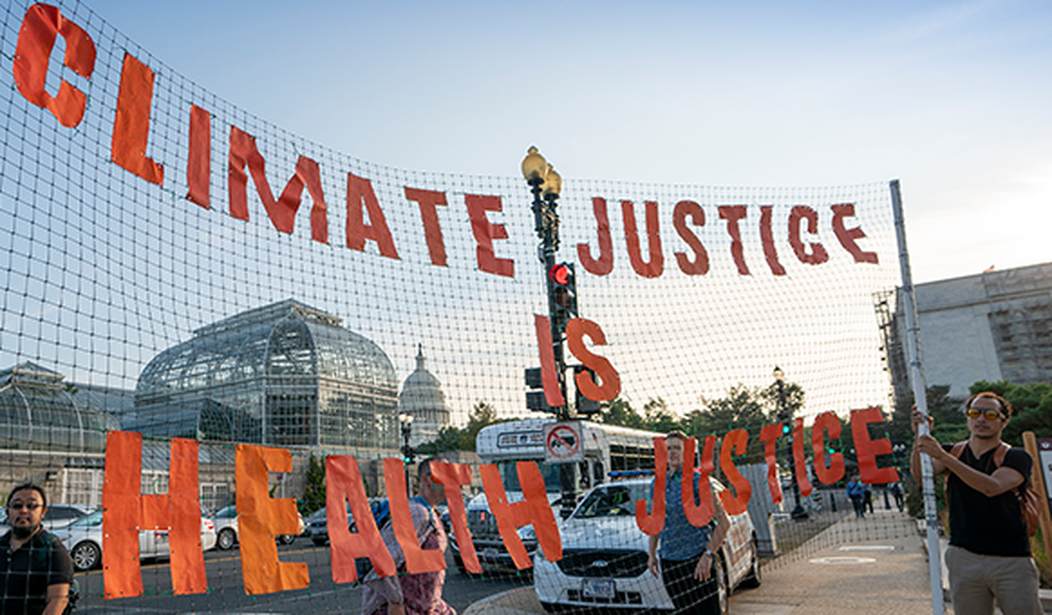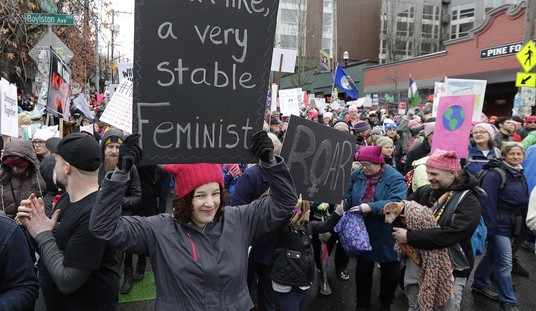Political leaders and media personalities are fond of saying climate change poses an existential threat to humans and the planet. The weight of scientific evidence doesn’t support this oft-made claim.
Despite what is reported almost daily by the mainstream media, data from the United Nations Intergovernmental Panel on Climate Change (IPCC) and the U.S. National Oceanic and Atmospheric Administration (NOAA) show no increase in extreme weather events as the earth has modestly warmed over the past 150 years. Indeed, IPCC and NOAA data show the number of extreme cold spells, drought, floods, heatwaves, hurricanes, tornadoes, and wildfires have all either declined modestly or remained relatively stable since the late 1870s.
Despite these irrefutable facts, leaders from nations around the world have signed multiple international agreements, the latest being the 2015 Paris climate agreement, intended to avert a supposed pending climate disaster.
However, their actions do not match their words. The U.N. recently reported the same political leaders who publicly signed the Paris Climate Agreement committing them to restrict emission from their countries, have enacted domestic policies that actually increase emissions.
As of February 26, the U.N. says only 75 of the more than 190 countries that have ratified the Paris Climate Agreement have tendered firm commitments and detailed plans to cut emissions, despite having committed to deliver those plans by 2020. Adding insult to injury, the U.N. says “the level of ambition communicated through these NDCs indicates that changes in these countries’ total emissions would be small, less than -1%, in 2030 compared to 2010 … [whereas the] IPCC, by contrast, has indicated that emission reduction ranges to meet the 1.5°C temperature goal should be around -45% in 2030 compared to 2010.”
Whether it is large emitters or small, the reality is nations are putting poverty reduction and economic growth (rightly in my opinion) ahead of climate action.
Let’s look at a few examples.
India is the world’s third-largest greenhouse gas emitter. Under the Paris Agreement, India did not pledge to cut its emissions, rather it said it would reduce emissions intensity (emissions as a percentage of GDP). The problem with this is, even if India exceeds its carbon intensity reduction goals, its total emissions will still have increased substantially. As a result, the U.N. observes, “with current energy targets and policies, emissions are projected to keep increasing (by 24-25 percent above 2019 levels in 2030) and show no signs of peaking, in particular due to the lack of a policy to transition away from coal. Such an increase of emissions is not consistent with the Paris Agreement.”
Indeed, 70 percent of India’s electric power is generated by burning coal. And India’s most recent estimate is that by 2030 coal use for energy will increase by 40 percent.
The news is even worse out of China, the world’s biggest emitter. China, which is responsible for approximately 25 percent of the world’s emissions, vaguely indicated it expected carbon dioxide emissions to peak by 2030. Peak at what level?
The Chinese Communist Party recently released its five-year plan for economic development and it contained no reduction in coal use. It would be surprising if it did. In recent years, China has built dozens of new coal-fueled power plants, with hundreds more in various stages of construction, development, and planning. China intends to build coal-fueled power plants in Africa, throughout Asia, and the Middle East.
Simultaneously, China is disincentivizing new construction of wind and solar facilities, which the National Energy Administration (NEA) referred to as “unreliables.”
Even Argentina, a relatively small emitter, will have trouble squaring its development goals with its Paris climate commitment. At a recent conference, President Alberto Fernandez said Argentina’s goal was to reach net-zero greenhouse gas emissions by 2050. Meanwhile, back home, far from the limelight of international climate conferences, Fernandez announced the government was doubling down on fossil fuels, saying, “Today we are relaunching the oil and gas economy,” starting with $5 billion in government subsidies, to develop its shale fields.
Political elites don’t really fear a climate apocalypse is in the offing. Rather, they are using the threat of the “climate change” hobgoblin to accrue ever more power and control over peoples’ lives. For politicians, this is what the climate scare is and always has been about.
H.L. Mencken once famously quipped, “The urge to save humanity is almost always a false front for the urge to rule.” Nowhere is this truer than in the push to save the world from climate change.
H. Sterling Burnett, Ph.D. ([email protected]) is a senior fellow at The Heartland Institute, a nonpartisan, nonprofit research center headquartered in Arlington Heights, Illinois.













Join the conversation as a VIP Member